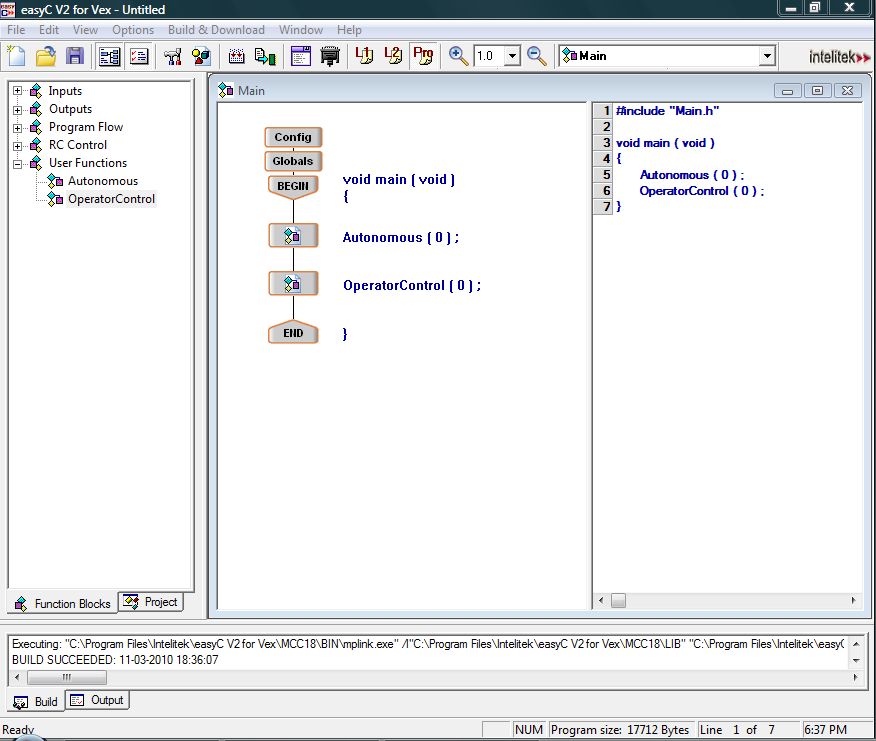

How do you code a VEX bumper? Bumper Switch – VEX Coding Studio I have scoured the VEX Forum with every search term I can think of, and come up with virtually nothing that’s useful or more informative than the product info sheet.A color sensor is a type of "photoelectric sensor" which emits light from a transmitter, and then detects the light reflected back from the detection object with a receiver. That’s about all I’ve got on this sensor. Any material used strictly as a color filter or color marker for a VEX Light Sensor. Robots are allowed the following additional “non-VEX” components:Ī.
#How to program a light sensor in robotc manual
Again, in competition situations, it seems unlikely that many teams are going to make a lot of use of this option, but it is mentioned specifically in the rule manual as something you are allowed to do: The other use that’s mentioned frequently in combination with this product is to put a colored filter (e.g., piece of cellophane) over the sensor to turn it into a color sensor instead of a light sensor. (You can also see code from Griffin Tabor for doing this calibration on the field with a line-tracker in a post I wrote a few months ago.) The RobotC page with sample code has instructions in it that does the calibration. You want to calibrate it in the program each time its run this can be done in the pre-autonomous (RobotC) or initialize (eas圜) period of a competition program. You can’t calibrate it in your lab and then take it to a gymnasium and expect it to work the same. One thing that’s done in this code and mentioned elsewhere is the importance of calibrating the light sensor when you are using it. The code is analogous to line-following, adjusting left- and right-side power to drive toward a target. RobotC has sample code for a robot that drives toward a light source using 2 light sensors installed on each side of the robot. One can program a robot to move away from dark areas, or to move toward a light source. UsesĪs described in the VEX product info sheet, this sensor can be used to “steer” a robot. Since the photoresistor is sensitive only to the visible light spectrum, the light sensor does not work for detecting (and is not impacted by) infrared or ultraviolet light. dark area = low resistance = returns high voltage to cortex = high sensor value.bright light = high resistance = returns low voltage to cortex = low sensor value.The light sensor uses a component known as a photoresistor, which changes its resistance based on the ambient light level: This analog light sensor is designed to “read” ambient light, and returns a value from 0 to 255 (eas圜) or 0 to 4095 (RobotC), with 0 being brightest, and large numbers being darkest.Īnalog sensors work by returning a voltage (from 0 to 5V) back to the cortex, which is then converted into a number you can use.

But we honestly didn’t try that hard to figure it out, since we had no place to put it.Ĭost: $20 for one sensor ( VEX product page). My team tried to use it in Nothing But Net to see when a ball was being moved up a ramp to the flywheel, but we couldn’t find a decent place to mount it, and in the eas圜 online window it didn’t seem all that responsive. So here I present the facts and some resources. I haven’t written anything in-depth because this is a sensor that gets very, very little use in competitive robotics. Previous posts have reviewed potentiometers, bumper/limit switches, shaft encoders, line tracker, ultrasonic rangefinder, LEDs & jumper clips, gyro, and accelerometer. I realize that I’ve been remiss on my survey of VEX sensors and have not yet covered light sensors.


 0 kommentar(er)
0 kommentar(er)
